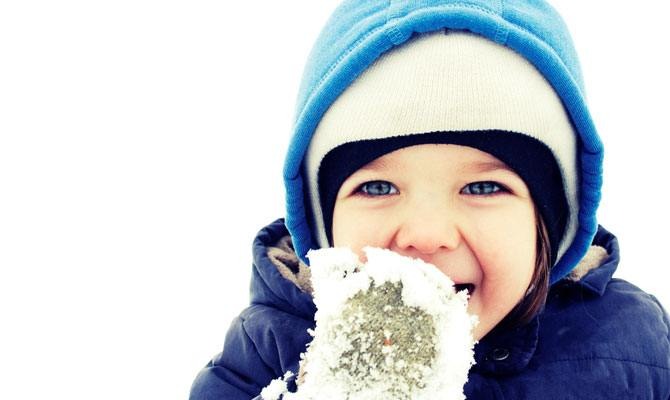When Is It Safe To Eat Snow?
It's something every kid has done: run outside into the first big snowstorm of the season, fresh white mounds of snow covering everything in sight, and immediately grab a handful and eat it without even thinking about it — possibly after making a snow angel. But are there any hazards involved in eating snow?
Well, it depends where you are. According to the UCSB ScienceLine, pure, fresh snow that's fallen, say, on top of a mountain is perfectly safe to eat (or to melt and drink; mountaineers do it all the time). If you're planning on drinking melted snow, however, keep in mind that because it's condensed water vapor it's technically distilled water, which is toxic without the addition of a small amount of salt (or Gatorade, or anything that contains a little sodium).
But what about kids out playing in the snow? Again, it depends where they are. If the snow is freshly-fallen out in the countryside and hasn't made any contact with anything except for the snow that's under it, it's probably okay to eat a small amount of it. But don't forget that when the snow is falling it picks up particles and pollutants in the air, so even if it looks pure it's not completely clean. So if you're in a major city, that freshly-fallen snow might be hiding a fair amount of smog and dust.
Finally, never eat snow that's been sitting around for a while. Just like you wouldn't eat ice cream that's fallen onto the ground, you shouldn't eat snow that's been next to the sidewalk for hours, collecting dirt. You also want to avoid pinkish snow, which gets its hue from toxic red algae, and you should never eat yellow snow, because ... well, you know why.
